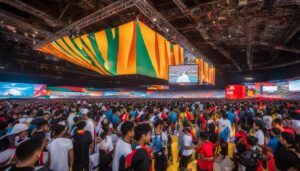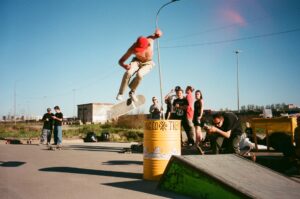Race walking is an Olympic sport that requires skill, endurance, and technique. If you’re interested in learning how to race walk, you’ve come to the right place.
In this comprehensive beginner’s guide, we’ll cover everything you need to know about race walking, from the basics to advanced techniques. So let’s get started!
Table of Contents
- What is Race Walking?
- Rules of Race Walking
- Benefits of Race Walking
- Getting Started
- Choosing the Right Shoes
- Proper Clothing
- Warming Up
- Stretching
- Race Walking Technique
- Posture
- Stride Length
- Arm Swing
- Foot Strike
- Common Mistakes to Avoid
- Training for Race Walking
- Endurance Training
- Strength Training
- Flexibility Training
- Advanced Techniques
- Cadence
- Speed Training
- Hill Training
- Race Walking Competitions
- FAQs
- Conclusion
1. What is Race Walking?
Race walking is a competitive form of walking that is a recognized Olympic sport. It is a discipline that requires athletes to walk as fast as they can, while still adhering to strict rules that govern the technique of the sport.
The technique of race walking involves maintaining contact with the ground at all times and keeping at least one foot in contact with the ground at all times.
2. Rules of Race Walking
Race walking has some strict rules that athletes must adhere to, or they risk disqualification.
The most important rule is that athletes must maintain contact with the ground at all times. They must also keep at least one foot in contact with the ground at all times. This is known as the “flight rule”.
If a judge observes that an athlete is not adhering to these rules, they can issue a warning, and if the athlete continues to break the rules, they can be disqualified.
3. Benefits of Race Walking
Race walking is an excellent way to improve your cardiovascular health and endurance. It is a low-impact exercise that puts less strain on your joints than running or jogging.
It can also help you burn calories and lose weight. Additionally, race walking can improve your balance and posture, which can help prevent falls and other injuries.
4. Getting Started
Before you begin race walking, there are a few things you should know.
First, it’s important to choose the right shoes. Look for shoes that are specifically designed for race walking, as they provide the support and flexibility you need.
You should also wear comfortable, breathable clothing that allows you to move freely.
It’s also important to warm up before you start walking and to stretch your muscles to prevent injury.
5. Race Walking Technique
The technique of race walking is essential to master if you want to be successful in the sport. Here are some key elements to focus on:
Posture
Good posture is critical in race walking. You should keep your back straight, your shoulders relaxed, and your head up. Avoid slouching or leaning forward, as this can slow you down.
Stride Length
Your stride length is the distance between each step you take. In race walking, you should take short, quick steps to maintain a brisk pace. Try to take at least three steps per second.
Arm Swing
Your arm swing is also important in race walking. Keep your arms close to your body and swing them back and forth in a straight line. Your elbows should be bent at a 90-degree angle, and your hands should be relaxed.
Foot Strike
In race walking, your foot should make contact with the ground heel first, and then roll forward to the ball of your foot. Try to avoid landing on your toes or the ball of your foot, as this can slow you down.
6. Common Mistakes to Avoid
There are some common mistakes that beginner race walkers make.
One is over-striding, which can slow you down and cause injury. Another mistake is leaning forward or back, which can throw off your balance and cause you to lose speed.
It’s also important to avoid bending your knees too much, as this can cause you to lose energy.
7. Training for Race Walking
To become a successful race walker, you need to train your body to be able to handle the demands of the sport. This includes endurance training, strength training, and flexibility training.
Endurance Training
Endurance training is essential for race walking. You need to be able to walk at a brisk pace for long periods of time. Start by walking for short periods, and gradually increase your time and distance. You can also try interval training, where you alternate between walking at a moderate pace and walking at a faster pace.
Strength Training
Strength training is important for building the muscles you need to maintain good posture and a brisk pace. Focus on exercises that target your legs, hips, and core, such as lunges, squats, and planks.
Flexibility Training
Flexibility training is important for preventing injury and maintaining good form. Incorporate stretches into your warm-up and cool-down routines, and try yoga or Pilates to improve your flexibility.
8. Advanced Techniques
Once you’ve mastered the basics of race walking, there are some advanced techniques you can try to improve your speed and performance.
Cadence
Cadence refers to the number of steps you take per minute. In race walking, a higher cadence is generally better, as it allows you to maintain a brisk pace without over-striding. Aim for a cadence of at least 180 steps per minute.
Speed Training
Speed training can help you improve your overall pace and endurance. Try incorporating interval training into your workouts, or doing sprints to build speed.
Hill Training
Hill training is important for building strength and endurance. Find a hill with a moderate incline and walk up and down it several times, focusing on maintaining good form and a brisk pace.
9. Race Walking Competitions
If you’re interested in competing in race walking, there are many events and competitions you can participate in. Look for local races and events in your area, or consider joining a race walking club or team. Remember to always adhere to the rules of the sport and maintain good form.
10. FAQs
Race walking is a form of walking that is defined by its rules, which require one foot to be in contact with the ground at all times. The objective of race walking is to walk as fast as possible without breaking these rules, while covering a specified distance.
Yes, race walking is a competitive sport that is recognized by the International Association of Athletics Federations (World Athletics). There are several events held at both the national and international levels, and athletes can compete in races ranging from 5 kilometers to 50 kilometers in length.
No, you don’t need any special equipment to start race walking. All you need is a comfortable pair of walking shoes and comfortable clothing that allows you to move freely. As you progress, you may want to invest in specialized race walking shoes and clothing, but they are not necessary to get started.
Yes, race walking is an excellent form of exercise that provides a low-impact, full-body workout. It can help you burn calories, tone your muscles, and improve your cardiovascular health, among other benefits.
Yes, anyone can learn to race walk, regardless of their age or fitness level. However, it’s important to start slowly and gradually build up your endurance and technique to avoid injury.
11. Conclusion
Race walking is a challenging and rewarding sport that can help improve your cardiovascular health, endurance, and overall fitness. By mastering the technique of race walking and incorporating endurance, strength, and flexibility training into your routine, you can become a successful race walker and enjoy the many benefits of the sport.
- This Many Calories Are BURNED (per Hour) in Different Sports/Activities [List/Table]

- Data-Driven Success: Leveraging Analytics Tools in Sports Marketing

- Monitoring Triumph: The Importance of Ad Tracking in Sports Advertising

- Strategic Impact: Thoughtful Ad Placement in Sports Marketing

- Maximizing Space: Navigating Ad Inventory in Sports Media Planning

- Activating Success: The Role of Activation in Sports Marketing

- What Is Sports Marketing? [Easy To Understand]

- Why Gross Impressions Are Important for the Success of Sports Marketing

- Surge in Ice Hockey Equipment Market Signals Power Play Ahead

- Global Motorsport Market Set for a Thrilling Growth Journey

- Board Sports Market Surges: US Hits $10 Billion Mark, China Eyes $2 Billion by 2030

- The Crucible Chronicles: Unveiling the Storied Legacy of the World Snooker Championship

- Sports Event Promotion: Marketing Strategies for Full Stadiums

- Marketing for Sports Travel Agency – 10 Unique Tips for New Customers & More Sales

- Marketing for Sports Podcast – 10 Unique Tips for New Customers & More Sales

- Marketing for Go-kart Business – 10 Tips for New Customers & More Sales

- Marketing for Bike Shops – 20 Tips for New Customers & More Sales

- Marketing for Physical Therapists – 20 Tips for New Customers & More Sales

- Marketing for Sports Photographers – 10 Tips for New Customers & More Sales

- Marketing for a Bowling Alley – 20 Tips for New Customers & More Sales

- Marketing for Snooker Clubs – 20 Tips for New Members & More Sales
